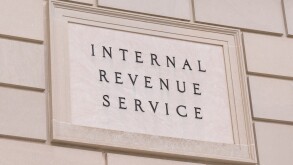Treasury and the Internal Revenue Service (IRS) issued final regulations implementing the base erosion and anti-abuse tax (BEAT). They also issued a series of important proposed regulations.
Many commenters discussed the administrative burdens of Prop. Treas. Reg. § 1.59A-2(e)(3)(vii) regarding affiliated groups in which the companies have different year ends. The final regulations, therefore, adopted a ‘with-or-within year end’ method to determine the gross receipts and the base erosion percentage of an aggregate group (Treas. Reg. § 1.59A-2(c)(3)).
Comments requested that final regulations provide an exception from the term ‘base erosion payment’ for revenue sharing payments or arrangements, including allocations with respect to global dealing operations. Specifically, some comments recommended that the final regulations provide that a payment is not a base erosion payment in a situation in which the domestic corporation records revenue from transactions with third party customers, and in turn the domestic corporation makes payments to a foreign related party. Treasury and the IRS declined to make changes to help in situations such as these, which can be all too common.
The final regulations, however, do generally exclude amounts transferred to, or exchanged with, a foreign related party in a transaction described in §§ 332, 351, and 368 (corporate nonrecognition transaction) from the definition of a base erosion payment. This was an area in which Treasury and the IRS received criticism concerning their approach in the proposed regulations and would have turned many routine tax-free transactions into base erosion concerns. However, BEAT can still apply to these transactions to the extent they are taxable, for example, when ‘boot’ is received.
However, they also addressed these transactions with a new anti-abuse rule. Treas. Reg. § 1.59A-9(b)(4). The anti-abuse rule provides that a transaction with a principal purpose of increasing basis in property acquired in a non-recognition transaction will not qualify for the non-recognition transaction exception. If the basis step-up transaction is within six months before the non-recognition transaction, it will be deemed to have the tainted principal purpose.
The final regulations retain the important services cost method (SCM) exception, and the rule is unchanged from the proposed regulations.
The final regulations do not provide a regulatory exception to the definition of a base erosion payment for a payment that may give rise to subpart F, global intangible low-taxed income (GILTI), or passive foreign investment company (PFIC) inclusions. Thus, if the payment to a controlled foreign corporation (CFC) gives rise to GILTI, for example, it can still be treated as a base erosion payment.
The BEAT regulations also contain general anti-abuse rules. The final regulations clarify the ‘principal purpose’ standard by adding new examples that illustrate the differences between transactions that Treasury and the IRS find to be abusive or non-abusive.
New proposed regulations provide an election (and certain procedural safeguards) by which a taxpayer may permanently forego a deduction for all U.S. federal tax purposes, with the result that the foregone deduction will not be treated as a base erosion tax benefit. This could be very helpful in avoiding the ‘cliff’ effect of the BEAT rules. The election can be made when the tax return is filed or during, or because of, a later IRS examination. This is very useful since a taxpayer could elect to forego deductions on audit if the effect of audit adjustment is to send the taxpayer over the BEAT ‘cliff’.
Jim Fuller
T: +1 650.988.8499
David Forst
T: +1 650.988.8498













